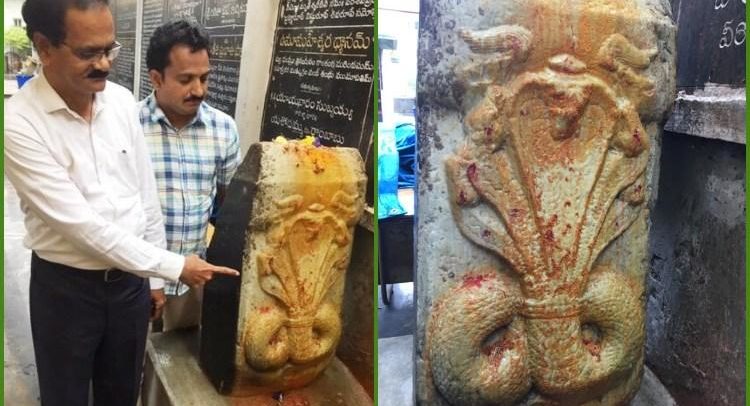Guntur, a city within the Andhra Pradesh Capital Region, located 24 km away from the state capital Amaravati has now drawn the attention of everyone particularly of historians as a Buddhist sculpture of Naga Muchulinda was discovered here recently.
It happened during the visit of Archaelogist and Buddhist scholar Emani Sivanagi Reddy along with Subhakar Medasani, secretary, Amaravati Buddha Vihara to Agasthyeswara temple, in old Guntur. To his utter amazement he just came across the sculpture, which is erected on a base in the south-west corner of the temple. The sculpture is carved on a Palnadu limestone.
After studying its features, Dr Reddy found that on one of the sides of the 3 rd century AD Buddhist sculpture there was a 11 th century AD Telugu inscription was engraved, which says about the donation of some land to the Agasthyeswara temple for its maintenance. He opined that the sculpture represented Naga Muchulinda, the mighty king of serpents, who protected the Buddha from continuous rain with his hood for four weeks, when the latter was in meditation under the Bodhi tree, after his enlightenment, . Dr Reddy said that it was very encouraging to see that devotees were engaged in worshipping the Buddha Padas – Buddha’s foot prints.
Before Guntur, such findings had been reported from Amaravati, Chandavaram, Ghantasala,Nagarjunakonda, Pedakallepalli and Goli and according to Dr Reddy, these sculptures of Naga Muchulinda belongs to the Theravada and Mahayana period of Buddhism (During 1st century BC to 3 rd century AD).
Dr Reddy is quite sure that old Guntur has a lot beneath it as a Buddhist site and contemporary to Nagarjunakonda, 1800 years ago. He requested the officials of the temple and archaeology department to protect the sculpture and preserve it as it represents the last phase of Amaravati School of Art of the Ikshwaku period. After all the heritage tourism’s overall purpose is to gain an appreciation of the past.

